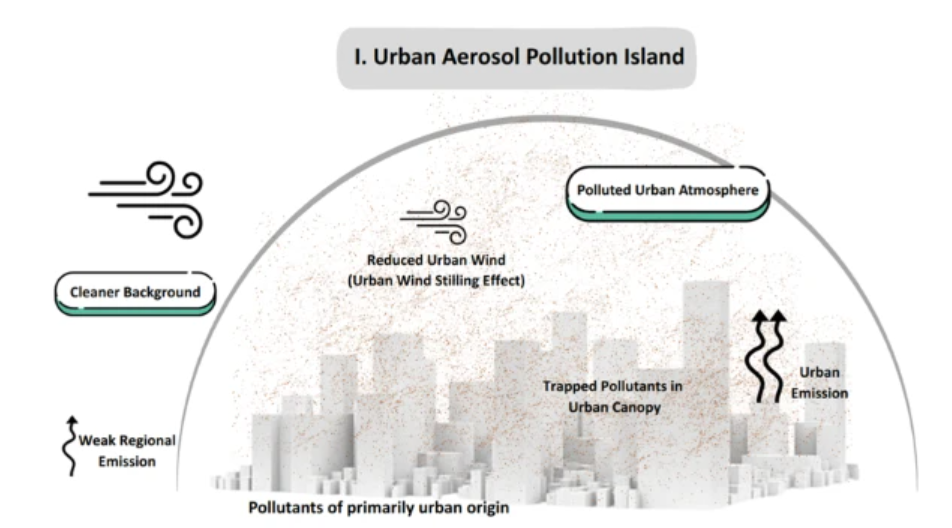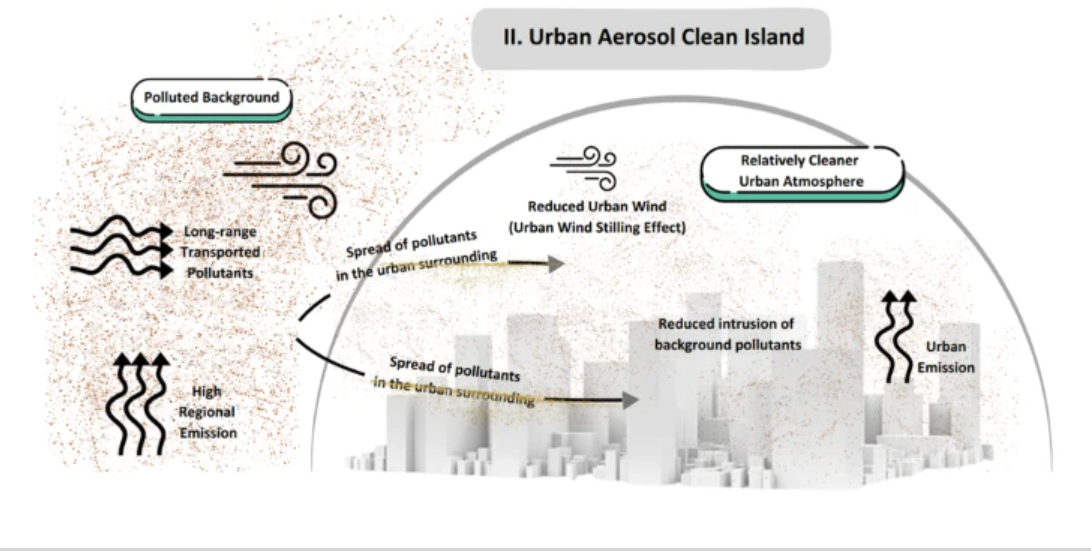7667766266
enquiry@shankarias.in
Mains: GS III - Environmental Pollution and Degradation
A recent study on aerosols levels of 141 cities in India from 2003 to 2020 by IIT at Bhubaneswar, has shed new light on urban aerosol pollution patterns across India, revealing a north-south divide in how pollution domes form over cities.
|
Aerosols |
|

A pollution dome is a phenomenon where pollutants, such as smog and particulate matter, become concentrated and trapped in the atmosphere usually above a city or industrial area, forming a dome-like layer of polluted air.

|
Wind Stilling Effect |
|